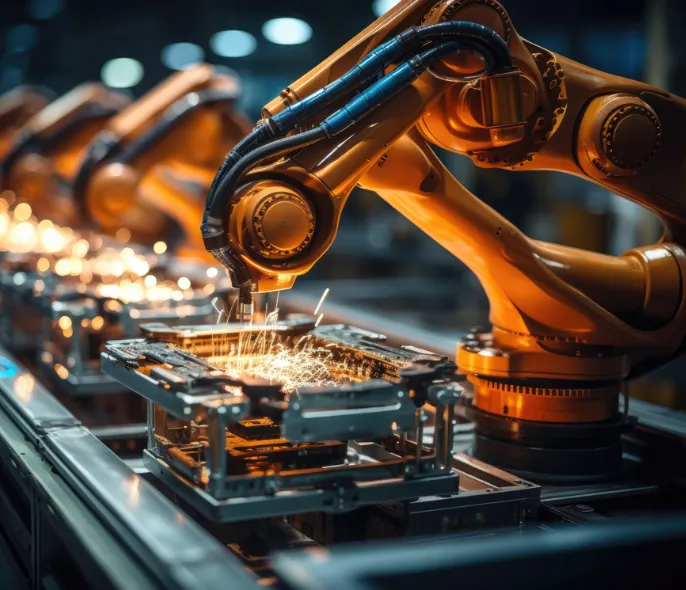Modern manufacturing leaders face constant pressure, often balancing multiple urgent issues at once. Traditional methods of decision-making no longer keep pace with today’s demands, where real-time responsiveness, predictive insights, and proactive quality management are becoming non-negotiable. Artificial intelligence (AI) is not just improving these areas—it’s redefining the very foundation of how operations are run.
Transforming the Manufacturing Decision Landscape
Production floors now generate staggering volumes of data every shift. The challenge lies not in collecting it, but in turning it into actionable insights at speed. AI enables organizations to do exactly that, converting raw data into timely decisions that directly impact efficiency, quality, and profitability. Workers, too, are recognizing its value—many report that AI tools help streamline tasks and boost productivity across the board.
Predictive Power Through Machine Learning
Equipment failures no longer need to catch teams off guard. Machine learning algorithms can identify subtle anomalies—such as unusual vibrations or temperature shifts—that indicate upcoming breakdowns. This allows for maintenance to be scheduled proactively, cutting downtime and preventing costly surprises.
Beyond maintenance, AI enhances scheduling. If materials arrive late or sudden orders appear, the system automatically recalibrates production plans. Instead of managers juggling conflicting priorities, the software optimizes schedules in real time.
Quality Control at Machine Speed
Computer vision is revolutionizing inspection. Instead of relying on occasional sampling, every product can be examined automatically with precision far exceeding human eyesight. Systems can detect surface flaws or inconsistencies in thickness instantly and adjust production parameters before the next item rolls off the line. The result: higher-quality output with fewer reworks.
Voice-Enabled and Conversational Operations
Natural language processing is bringing a new level of accessibility to manufacturing. Operators can now use voice commands to check performance metrics or adjust settings without interrupting workflow. For managers, AI converts complex data streams into clear, digestible reports, reducing reliance on endless spreadsheets and helping leaders focus on decisions that matter.
Connecting the Digital Ecosystem
The majority of manufacturers are already exploring AI for process optimization. At the heart of this shift is integration—systems that communicate seamlessly through IoT networks and edge computing. With sensors capturing temperature, vibration, and pressure in real time, decisions can be made on the spot. Instead of waiting for cloud analysis, edge devices process data instantly, enabling rapid adjustments that prevent costly interruptions.
Safe Experimentation with Digital Twins
Digital twins—virtual replicas of physical processes—allow manufacturers to test scenarios without interrupting operations. Adjusting workflows, trialing equipment modifications, or experimenting with new production strategies can all be simulated before being applied. Continuous updates keep these models aligned with real-world performance, making them powerful tools for innovation and risk reduction.
Beyond Simple Automation: Smarter Applications
AI is moving decision-making beyond fixed rules. Systems can now weigh multiple objectives—such as cost efficiency, delivery timelines, and quality requirements—at the same time. This allows for:
- Adaptive scheduling that reorganizes priorities when disruptions occur.
- Supply chain intelligence that predicts risks and suggests alternative strategies before problems escalate.
The outcome is agility: organizations can respond faster, smarter, and with greater resilience than before.
Building an AI Roadmap
Implementing AI in manufacturing requires a deliberate approach. Companies must first evaluate infrastructure, data quality, and integration readiness. Return-on-investment projections should include both direct savings and secondary benefits like improved decision speed.
Starting small is often the best path. Pilot projects allow teams to learn, adapt, and mitigate risks such as data security or training gaps. Once proven, initiatives can be scaled across the business with confidence.
Addressing Common Concerns
- ROI Timeline: Most firms see measurable results within 6–12 months, with full returns in 18–24 months.
- Biggest Challenge: Data consistency remains the largest barrier to success.
- Accessibility for Smaller Firms: Cloud-based and subscription models have made AI technologies increasingly affordable, even for mid-sized manufacturers.
The Future Belongs to Data-Driven Decision-Making
AI in manufacturing is about far more than efficiency. It’s about transforming how choices are made at every level—from frontline adjustments to long-term strategy. Companies adopting these tools today are building advantages that will compound over time: stronger customer relationships, lower costs, and more reliable operations.
The question isn’t whether AI will shape the future of manufacturing—it’s who will embrace it early enough to lead, and who will be left catching up.







